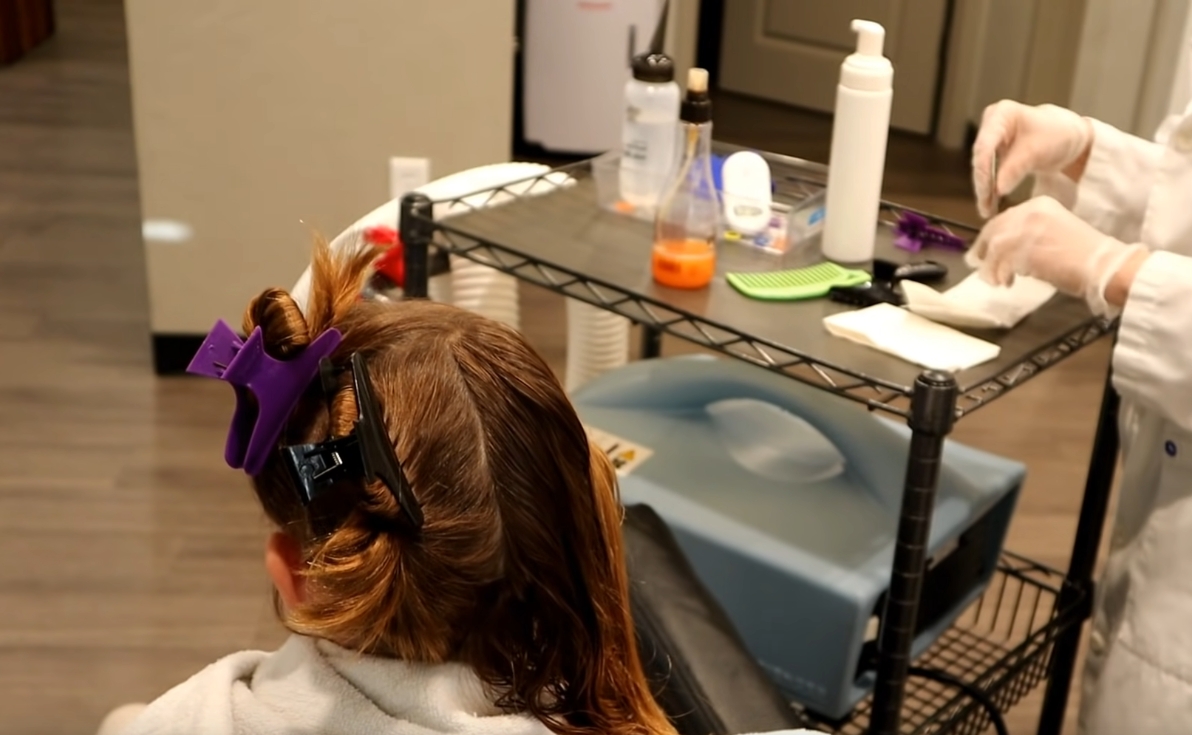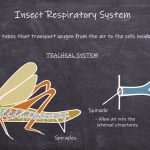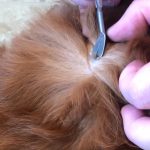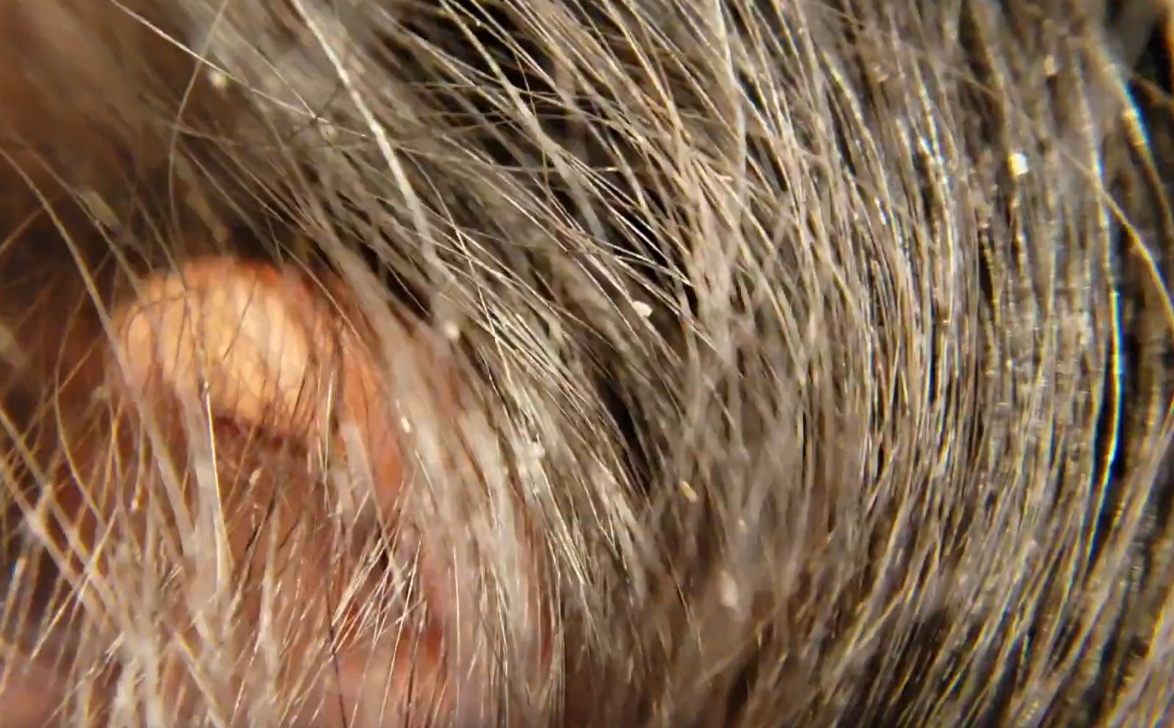Nits are small, wingless insects that live in the hair. It is essential to get rid of nits because they can cause serious scalp infections and make people feel itchy. This article will teach you how to get rid of nits using simple techniques!
| Method | Description |
|---|---|
| Combing | Use a fine-toothed comb to remove nits and lice from the hair. This method can be time-consuming but is effective if done regularly. |
| Shampoo | Use a special lice shampoo that contains permethrin or pyrethrin. These ingredients kill lice and nits on contact. |
| Conditioner | Apply conditioner to the hair and then comb through with a fine-toothed comb. This method makes the nits and lice easier to remove. |
| Essential Oils | Use essential oils such as tea tree, peppermint, or lavender to repel lice and make it difficult for nits to attach to the hair. |
| Vacuuming | Vacuum any areas where the person with lice has been, including clothing, bedding, and furniture. |
| Repeat Treatment | Repeat the treatment in 7-10 days to ensure all nits have hatched and been eliminated. |
What Are They Exactly?
Contents
Nits are tiny, egg-shaped parasites that live on the human scalp. They are most commonly found in children’s hair but can also be found in adults. Nits attach themselves to the hair shaft and feed on blood, which can cause itching and irritation.
What Are The Symptoms?
The most common symptom of head lice is itching. Other symptoms can include:
- Sores.
- Redness or swelling.
- A ticklish feeling on the scalp.
- Brown eggs (nits) on the hair shafts.
How Can You Spot Them?
Nits are tiny, oval-shaped parasites that live on the scalp of humans. They attach themselves to the hair shaft and feed off of blood. Nits are most commonly found near the neck and ears, but they can also be found elsewhere on the head. They are often difficult to see, as they are tiny (about the size of a sesame seed) and typically blend in with hair color. The best way to spot them is by parting the hair and looking for tiny white objects clinging to the roots of individual hairs.
Here are some things you may do to help:
Wet Combing
If you have lice or nits, try wet combing. Wet combing is when you apply conditioner or coconut oil to your hair, then use a fine-tooth metal nit comb to remove the lice and nits.
To prevent small children from putting their hands in their mouths after wet combing, put Vaseline around their hairline for protection against head lice before beginning this process. Then place them under running water to wash off any loose eggs that might have come out of their scalp during the procedure.
Medicated Lotions and Sprays
If you have been wet combing for 17 days and have not been able to get rid of lice, ask a pharmacist. Over-the-counter medicated lotions and sprays are available. These work by coating the louse’s breathing tubes to not breathe and eventually dies.
Some people find that these treatments do not work well for them, but they can be worth trying before other methods.
Are There Any Complications?
One of the biggest dangers of head lice can lead to more severe health problems. In some cases, lice can cause an infection called cellulitis. This is a severe infection that affects the deep tissues of the skin. It can cause swelling, redness, and pain in the affected area. Cellulitis can lead to fever, chills, and even death if left untreated.
How are Head Lice Treated?
Head lice are a contagious, parasitic scalp infection that causes intense itching and serious medical problems. They cause misery for kids and parents alike. Head lice treatment is usually done with over-the-counter or prescription medications such as permethrin lotion or ivermectin oral suspension. Still, it’s important to remember not all treatments work on all species of lice. It’s also essential to use any prescribed medicines exactly as directed. When head lice are not treated, they will continue to spread and grow in number, which means more than one family member may need treatment at the same time.
Here’s what you should know about head lice:
- What they look like.
- How long an egg (nits) can survive.
- How to get rid of nits.
Prescription Medications for Lice Treatment
It’s not uncommon for a child to get lice from school. While it can usually be treated by ordinary shampooing, sometimes the infestation has become so severe that more vital prescription medication is needed. Below are some of the most commonly prescribed drugs used to treat head lice.
- Benzyl alcohol (Ulesfia): A common misconception is that lice are only found in the hair. Lice are also commonly found on clothing, bedding, furniture, and other areas where people may contact them. The Centers for Disease Control estimates that 6-12 million schoolchildren get head lice annually in the U.S., which means that there’s a good chance your child will be exposed to head lice at some point during their school years.
- Ivermectin (Sklice): Ivermectin is a prescription medication used to treat head lice. It can be purchased over the counter at most pharmacies. Ivermectin comes in a topical cream or lotion form applied directly to the scalp. The medication works by paralyzing and killing the lice.
- Pyrethrum: Pyrethrum is a naturally occurring insecticide that is extracted from chrysanthemums. It can be purchased over the counter at most pharmacies. Pyrethrum comes in a topical spray form and is sprayed directly onto the scalp. The medication works by paralyzing and killing the lice.
- Malathion (Ovide): This medication comes in shampoo and is approved for children over six years old. The active ingredient, malathion, kills live lice but does not kill nits (eggs). Using this product will take at least one week before getting rid of all your head lice and two weeks to get rid of all the nits. This product has been known to cause seizures when used by sensitive or allergic people to certain ingredients such as soybeans, peanuts, and sweet potatoes. It also should be avoided in people with epilepsy or taking MAOIs (monoamine oxidase inhibitors) such as Marplan®, Nardil®, or Parnate® because high can result in convulsions.
- Ivermectin (Stromectol): Ivermectin is a pill you take by mouth. The active ingredient, ivermectin, kills both live lice and eggs. You only need one dose to get rid of all the head lice. Ivermectin can be used by people who are allergic to permethrin and pyrethrum.
- Spinosad (Natroba): This is a lotion that works by contact – it kills the lice when you put it on your head and keeps killing them for several hours. It can be toxic if ingested, so keep children away from each other after applying Spinosad (Natroba) until their hair has dried completely; they should also avoid touching their eyes while this product is in place.
How to Use Lice Treatments
A louse is a common problem that can cause serious health issues. If you or someone in your home has lice, there are many treatments available to get rid of the infestation and prevent it from coming back. Lice usually live on hair, but they can also live in clothing and bedding.
If you have not been able to get rid of head lice, it is time for a doctor. They don’t live more than 24 hours without human blood. This type of treatment should be used only by adults because the chemicals are strong enough to cause skin irritation. Follow the instructions on the product carefully, and be sure to rinse your hair well after treatment.
Lice Treatment Home Remedies
If you don’t want to use chemical treatments, talk with your doctor about other options. There are some things that you can do by yourself.
These home remedies include:
- Wet combing: this is one of the most popular methods. You will need a fine-toothed comb and lots of patience. Wet your hair, then part it into small sections. Comb through each section, using very little pressure. Make sure to get all the way down to the scalp. If you find any lice or nits, remove them with a fingernail or special comb. Repeat this every day for two weeks.
- Hot air: you can use a blow dryer on high heat to kill lice and eggs. Part your hair into small sections and hold the dryer about 12 inches away from your head. Keep the dryer moving, so it doesn’t overheat one spot on the head. Do this for five minutes per section.
- Mayonnaise: This is a popular home remedy because of its high oil content. Apply mayo to wet hair, making sure to cover the entire head. Put on a shower cap and leave it on for at least eight hours (preferably overnight). Wash your hair with shampoo and conditioner. Comb through with a fine-toothed comb to remove any lice or eggs.
- Vinegar: vinegar kills lice by dissolving their shells. Mix one part vinegar with three parts water in a spray bottle. Spray liberally on your scalp, then comb through with a fine-toothed comb. Leave on for 30 minutes before rinsing off with warm water. Repeat every other day for two weeks.
- Saltwater: mix one cup of salt with two cups of warm water. Stir until all the salt has dissolved, then pour it into a spray bottle. Spray on your scalp and comb through with a fine-toothed comb to remove any lice or eggs. Leave for 30 minutes before rinsing off with cool water (repeat every other day).
- Tea tree oil: tea tree oil is very potent, so you should first dilute it in another base oil like olive or coconut oil. Apply the mixture liberally to the hair and leave this on overnight (cover head if possible). Wash out the following day using shampoo and conditioner – repeat daily for up to three days.
- Essential oils: many essential oils can kill lice and nits. Tea tree oil is the most common, but you should also check out peppermint, lavender, lemon eucalyptus, and rosemary.
- Smothering agents: these are products that you put on your head to suffocate the lice. They include mayonnaise, olive oil, coconut oil, and Vaseline. Apply liberally and cover with a shower cap overnight. Shampoo out in the morning.
- Clothing: if someone in your household has lice, it’s essential to wash all of their clothes and bedding in hot water. Dry on high heat for at least 30 minutes. Vacuum furniture, carpets, and floors (including under the bed) to eliminate any eggs or nits that may be lurking there.
There are many different ways to treat lice – some people prefer chemical treatments while others use home remedies. Whichever route you choose, make sure to repeat the treatments for two weeks to kill any lice that may have hatched after the first treatment.
How to Get Rid of Lice in Your Home
The key to getting rid of lice is prevention. To start, you should make sure that all the people in your home are free from head lice and their eggs (called nits). If any person has been diagnosed with a case of head lice, wash all bedding and clothing in hot water or dry clean them. You should also use a special shampoo for treating head lice on everyone’s hair every day for at least two weeks. This will kill any adult bugs as well as their eggs. Finally, vacuum carpets thoroughly at least once each week to remove the nits that have fallen off your hair into furniture or other surfaces where they can hatch into new infestations. It is important not to share combs, brushes, hats, or other personal items with anyone else.
- Use heat: One of the most common ways to get rid of nits is by using heat. This can be done in some ways, such as using a hairdryer, putting on a hat or headscarf that will create heat, or going outside in the sun. The ultraviolet radiation from the sun will help kill the lice and nits.
- Use vinegar: Another way to get rid of nits is by using vinegar. Vinegar has been shown to kill lice and eggs. To use this method, wet your hair with vinegar and let it sit for about 15 minutes before rinsing it out. You can also add vinegar to your shampoo or conditioner.
- Bag items in plastic: If you’re concerned about infesting your house with nits, put all of the clothes that people wearing nit-infested hair have worn into a plastic bag for at least 48 hours. This will kill any lice or eggs that are on these items.
- Use an antihistamine: If you don’t want to use heat treatment because it is too hot outside, make sure to take some OTC allergy medicine like Benadryl before heading out in the sun (don’t forget sunscreen). The antihistamines help dry up skin oils and dead cells, suffocating bugs like head lice.
- Shampoo daily: Shampooing every day helps prevent re-infestation because it kills off live lice each time you shampoo. Make sure to use a good quality lice-killing shampoo, such as those that contain permethrin or pyrethrins.
- Check for nits: Even if you’ve treated your child for lice and they seem to be gone, it’s important to continue checking their hair for nits every few days for at least two weeks after the treatment. Nits can hatch up to two weeks after hatching, so you want to make sure all eggs have been killed.
- Vacuum: Vacuuming your house weekly can also help eliminate any lice or eggs that may be present. Make sure to vacuum furniture, carpets, rugs, and floorboards.
- Wash bedding: Lice and eggs can also be found on bedding. Make sure to wash all sheets, blankets, and pillowcases in hot water (at least 130 degrees Fahrenheit) and then dry them in a hot dryer for at least 20 minutes.
- Clean hair tools: Hair tools such as brushes and combs that people with lice have used should be washed in hot water (at least 130 degrees Fahrenheit) or thrown away.
- Treat hair products: Before using any hair products such as gels, mousse, hairspray, or styling gel on someone who has had head lice within the past three days, you should first wash it out of their hair because these items can suffocate nits and make them harder to kill.
- Nit combing: If there are still some nits present in your child’s hair after two weeks from a previous infestation, continue nit-combing every day for another week until all of the eggs have been removed. This is one of the most effective ways to remove nits.
- Don’t use insecticide fogs or sprays: Insecticide sprays and mists can irritate eyes, lungs, skin, and mucous membranes. They also don’t work as well as other products on nits.
- Don’t use a hot air blower: Using a hot air blower on your child’s hair isn’t nearly as effective at killing lice or eggs because the heat levels aren’t high enough to kill them off. However, this method may help break down some of the nit glue, making it easier for you to comb out any remaining nits after using another treatment option.
- Do not wash clothing in hot water: Washing clothes in boiling water is unnecessary unless worn by someone with active lice within the past three days.
- Use hair products that contain lice-killing ingredients: If you’re looking for a product to help get rid of nits, look for one with permethrin or pyrethrins in it. These are two effective treatments that will kill off both the eggs and active lice present on your child’s head.



